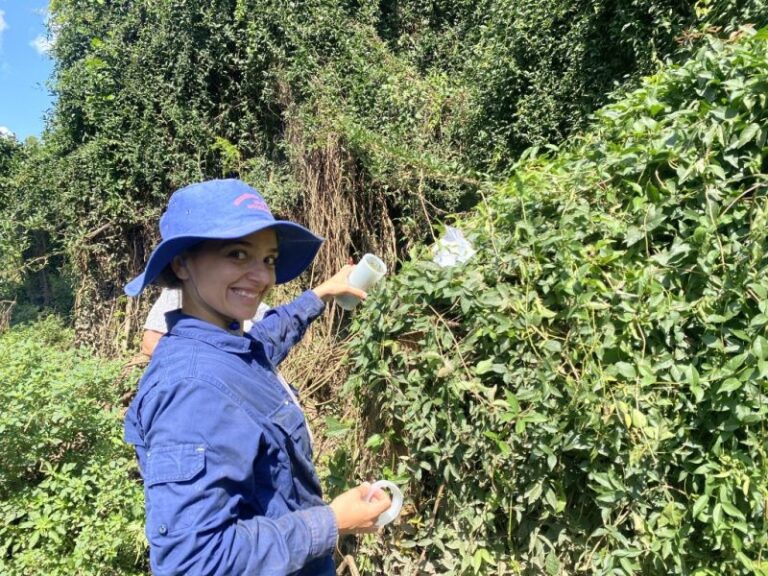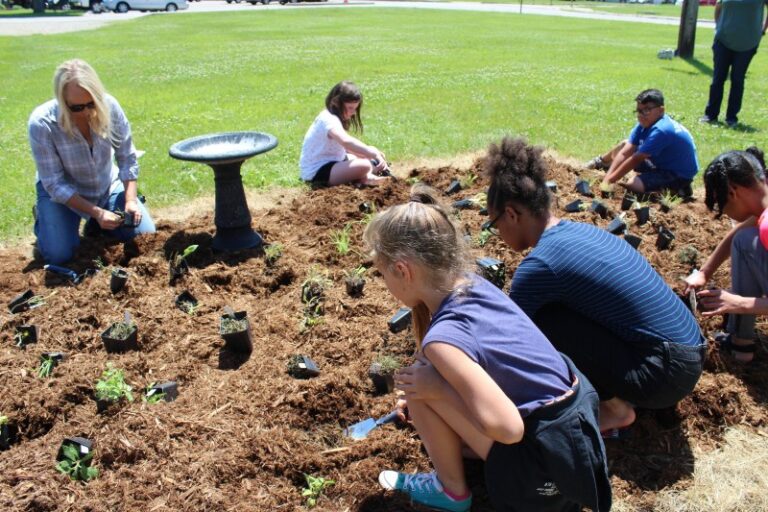Threatened Wildlife Species – By understanding why the farm animals we value are killed, we can help ensure they are part of a shared, compassionate future for all.
On September 7, 1936, the last remaining Tasmanian tiger died alone in captivity. This native Australian species has become extinct due to massive habitat destruction and government-encouraged hunting. Almost 90 years later, with many domestic animals listed as vulnerable or endangered, we urgently need to learn from the mistakes of the past.
Threatened Wildlife Species

Despite being loved by people across the continent and around the world, Australia’s wildlife populations are declining at an alarming rate. Even the most beautiful and charismatic species, such as the koala, which receives a lot of conservation attention, are endangered.
New Stamps Honor Endangered Species In All 50 States
Fortunately, there is a growing number of compassionate people like you – who want to reverse this trend and see farm animals survive and thrive alongside us.
Dingoes are endangered domestic animals, forced to live in a shrinking habitat. In addition, their ‘protected’ status has been removed in some areas, and they are being poisoned, captured and killed through government-sponsored killing programs.
The main threats to wildlife survival are habitat destruction and exploitation, fueled by our current food system. Of the 28,000 species listed on the IUCN Red List, agriculture and aquaculture are at risk of extinction.
Every year, vast numbers of domestic animals are raised for slaughter for food, and trillions of animals are taken from the oceans.
Investing In Extinction: How The Global Financial Sector Profits From Traditional Medicine Firms Using Threatened Species
Currently, half of the world’s habitable land (ice and non-desert land) is used for agriculture, and more than three-quarters of that is used for raising animals. As more and more land is cleared to raise animals for grazing and food to grow, the habitat and food for domestic animals such as the endangered flying fox and the endangered koala are reduced. And when huge fishing nets roam the ocean and catch everyone in their path, vulnerable animals like sharks and rays also suffer.
Brown-headed Flying Fox: These native animals help regenerate our forests and keep ecosystems healthy. They have been migrating to the east coast of Australia for thousands of years, but human development is constantly reducing the wild spaces available to them.
The main threats to flying foxes are the destruction of their natural habitat and unfavorable temperatures. While searching for food, hungry animals are often injured or killed after being trapped in fruit trees, or in some states by landowners with state hunting permits.

Wildlife caretakers, like the folks at the Fly by Night Bat Clinic, are doing everything they can to help these gentle, sociable animals return to their wild lives.
Species Have Been Delisted From The Endangered Species Act, And Not For A Good Reason
Some so-called ‘protected’ species are even killed or killed to protect industry interests. Native dingoes may be poisoned or shot in some parts of the country, and the fishing industry uses dangerous and often harmful explosive devices to ‘retain’ seals from unnatural fish farms in their habitats.
The survival of Australia’s precious wildlife depends on how we learn to better share this planet that is home to us all, and much of that is changing the way we think about and eat food.
According to a recent study from Oxford, the food choices we make every day are incredibly powerful, perhaps more so than many people realize!
Australia’s land animals are being ‘squeezed’ out of their homes, with available data pointing to grazing animals – specifically beef and dairy – as the biggest cause. Land clearing for mining and urban use (housing and infrastructure) also has adverse effects, although agriculture uses much less land than livestock grazing.
Chart: Number Of Threatened Species Is Rising
Koalas were once hunted for their fur, but now face serious threats due to habitat loss due to deforestation, plantations and destructive weather events. In 2022, the Australian Government upgraded their conservation status from ‘vulnerable’ to ‘threatened’ in NSW, QLD and the ACT.
Including pastures used to graze domestic animals and land used to grow crops for their food, farmed animals account for 77% of global agricultural land. Surprisingly, although livestock occupies most of the arable land, it produces only 37% of the world’s total protein and even fewer calories – meaning that raising animals for food is the most efficient use of land.
There are an estimated 28 million cattle and 78 million sheep in Australia – and each of these animals needs land to graze. They also need food from crops, such as pigs and chickens, which are mostly kept on intensive farms. While the soybean crop is often maligned for causing global deforestation, most soybeans are used as feed for farmed animals around the world.

In 2018, one of the most thorough studies on the impact of food on the environment suggested that global land use for agriculture could be reduced by 75% if everyone switched to plant-based foods and the human population could feed itself. Considering that the weight of mammals raised to be killed for food now exceeds the weight of wild mammals on Earth by an estimated factor of 15 to 1, and that farmed poultry outnumbers wild birds by an estimated factor of 3 to 1, a reduction in cropland would have large benefits wildlife, giving them much-needed space back.
Threatened Species Day
Every year, trillions of fish suffer and die from being crushed in fishing nets or from suffocation after being pulled from their aquatic home. ‘Non-target’ marine animals also fall victim to the fishing industry. As the net of supertrawlers catches everything in its path, some of the world’s most dangerous animals, such as sharks and rays, fall victim.
A third of sharks, rays and chimeras (relatives of sharks and rays) are now threatened with extinction, but this status does not provide them with real protection. Over 99% of shark species are killed in the normal course of fishing – whether for their meat, fins and oil for consumers around the world, or by inadvertent trawling as ‘by-catch’.
In addition to the dangers of fishing, sharks are also caught and killed indiscriminately in longlines (water nets with baited hooks) and shark nets in coastal locations popular with humans. These state government ‘shark kill’ programs have proven ineffective in protecting beachgoers and continue to cause suffering and death to sharks and even whales.
Dugongs are shy animals that are more closely related to elephants than any other marine mammal! They can live for 70 years or more, and as their slow counterparts are particularly sensitive to factors that threaten their survival, such as the loss or degradation of seagrass habitat (dredging and due to human activities such as port construction) and water pollution (from mining, fishing and activities on land).
Endangered Animals Threatened By Climate Change
Hammerhead sharks are social animals that can thoroughly scan the ocean for food with their wide eyes and highly specialized sense organs on their broad heads. Commercial fishing is the biggest threat to hammerhead survival, and two species (great hammerhead and hammerhead) are critically endangered.
Sawfish have a saw-like rostrum (snout) that can grow up to 2 meters! Among the world’s most endangered fish, the sawfish has lost more than half of its habitat worldwide and is vulnerable to gillnets and trawlers used by the fishing industry and shrimp trawlers, as their rostrum can easily become entangled in the nets. The seas around Australia are considered ‘lifeboats’ for sawfish, but they have almost disappeared from the entire east coast.
The farmed fish industry – in addition to causing excessive fish suffering – also poses a threat to wild marine life. Protected seals are shot and sometimes killed for the benefit of the farmed salmon industry. The fishing industry, which is often considered environmentally friendly, also contributes to the degradation of marine health. Fish are taken from the wild to feed farmed fish, ‘non-target’ species are killed as ‘by-catch’ and the ocean is polluted with fishing-related plastics.

People before us have adopted ways of thinking and shaped our beliefs about which animal species are ‘friends’ to be saved, ‘pests’ to be exterminated or ‘food’ to be eaten – but this is not how we should live.
Last Resort Option: Moving Climate Threatened Species To Save Them
Find out the latest news, issues and things you can do to support a better world for all animals.
We use cookies to improve your experience on our site. To learn more, see our privacy policy. Ask Chatbot Games & Quizzes, History & Society, Science & Technology, Biography, Animals & Nature, Geography & Travel, Arts & Culture, Money Videos.
Although every effort has been made to follow the rules of citation style, some inconsistencies may still occur. Please refer to the appropriate style manual or other sources if you have questions.
Richard Palardy Richard Palardy holds a B.A. Received. in English from Illinois State University in 2005. He was president of Encyclopedia, Inc. from 2008 to 2016. He was a research editor and worked on the blog since 2010…
Extinction Crisis Puts 1 Million Species On The Brink
Encyclopedia Editors Encyclopedia editors oversee subject areas in which they possess extensive knowledge, either through years of experience working on that material or through study for an advanced degree. They
Redlist of threatened species, threatened wildlife, threatened species, iucn threatened species, endangered threatened species, threatened animal species, threatened species act, threatened and endangered species, threatened species conservation, wwf threatened species, threatened species list, australian threatened species
- Dog Socialization Care Guide - August 11, 2024
- Best Dog-friendly Vacations - August 11, 2024
- Wildlife Conservation Organizations - August 10, 2024







